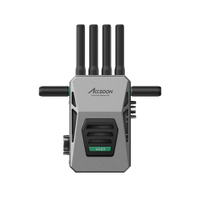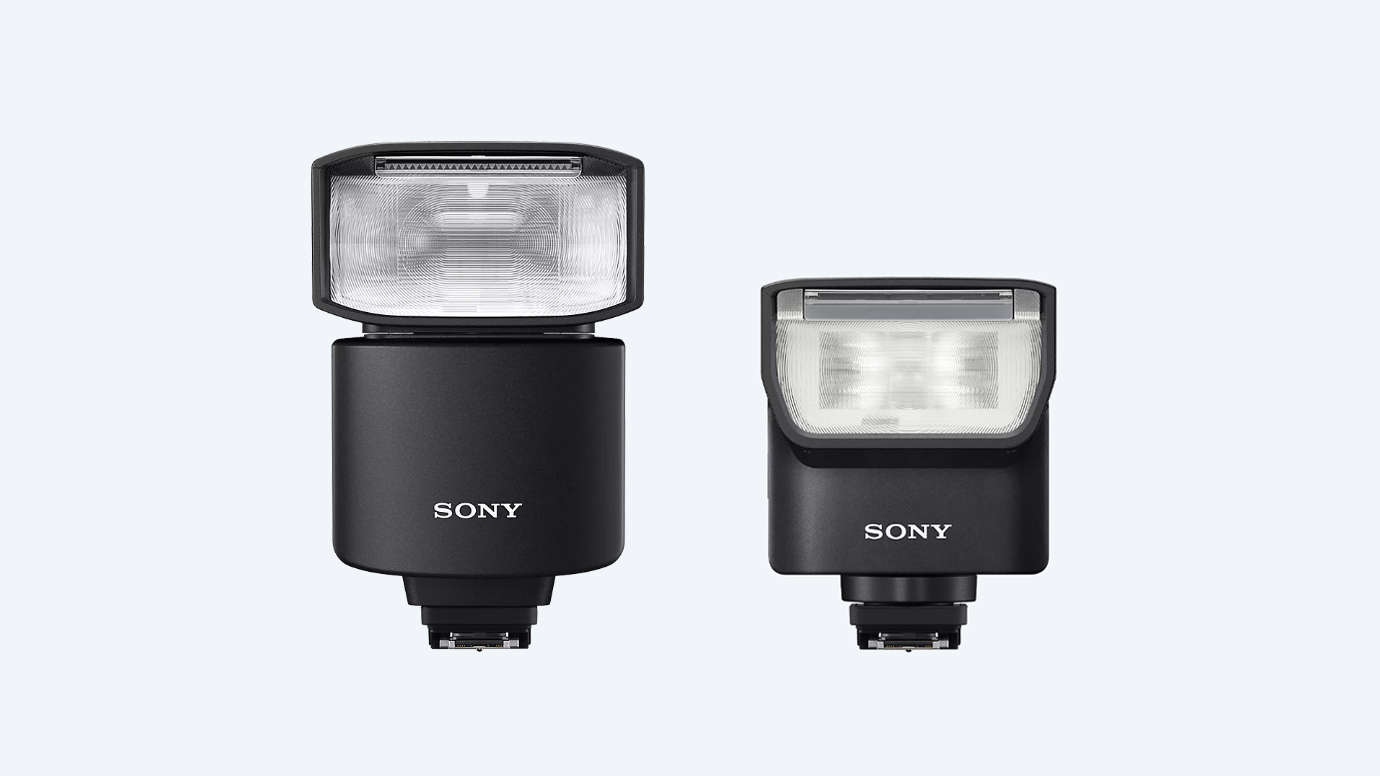Digital Camera World Verdict
The Transmission High-Bright combo is an excellent piece of gear. The signal is solid and far reaching, the display top notch and the user experience is great. It does need accessories to really get the most out of the features on offer but they may not be needed by all, so the ability to expand to fit projects is a massive benefit. All in all highly recommended for those who want a transmission and monitoring solution to grow with.
Pros
- +
Excellent build quality
- +
Adaptable features
- +
Incredible range
Cons
- -
Needs accessories to really shine
Why you can trust Digital Camera World
There can be no doubt that working wirelessly is a benefit. Being unconstrained by cables and all the associated management that entails is a liberating experience, which is why we see an increasing number of wireless transmission systems becoming available for filmmakers, from indie users shooting on phones, through to small teams up to larger outfits shooting on cinema cameras.
DJI has had a bit of a head start with this, as their drones have, for years, showcased some excellent video transmission, with fantastic range and reliability, which is key. A robust connection is a must, especially for those wanting to control aspects of the shoot remotely. The DJI transmission system, specifically the high-bight combo, which adds a field monitor allows not just viewing of the footage but focus pulling, amongst other attributes. Great news for ACs, directors, and more.
This combo has a number of key features aimed at creating a workflow that is adaptable to different needs, fits into DJI's Pro product lineup, and, ultimately, means making life easier for the filmmaker.
I've used systems from trade, acs soon, and others and was keen to test the DJI Transmission High-Bright Combo to see just how it fared in this rapidly evolving market.
A note on my use case. Not all features are compatible with all setups. For example, if you have a Sony camera, the DJI TS (which I will refer to it as from now on) will have you covered with remote camera control but this isn't true for all manufacturers. I won't list them in this review as firmware changes so rapidly, and new cameras are released, so check the specs if you're considering a purchase.
DJI Transmission: Specifications
| Resolution | 1080p/60 at 40Mbit/ps max |
| Power | DJI, NPF, V-mount batteries or DC |
| Recording formats | H.264 |
| Dimensions - transmitter | 127×87×26 mm |
| Dimensions - High-bright | 213×135×51 mm |
DJI Transmission: Price
The combo price is $2,499 / £1,979, which seems a lot – but you do get a lot for your money and the High-bright monitor can be used for wired monitoring, extending its uses. If you added up the cost of similar products with similar capabilities you'd be in roughly the same ballpark, so I'd say the price is fair. Keep in mind that you can add receivers to the setup, so if your productions grow the DJI TS can grow with it, although there would be additional cost for that.
DJI Transmission: Design & build quality
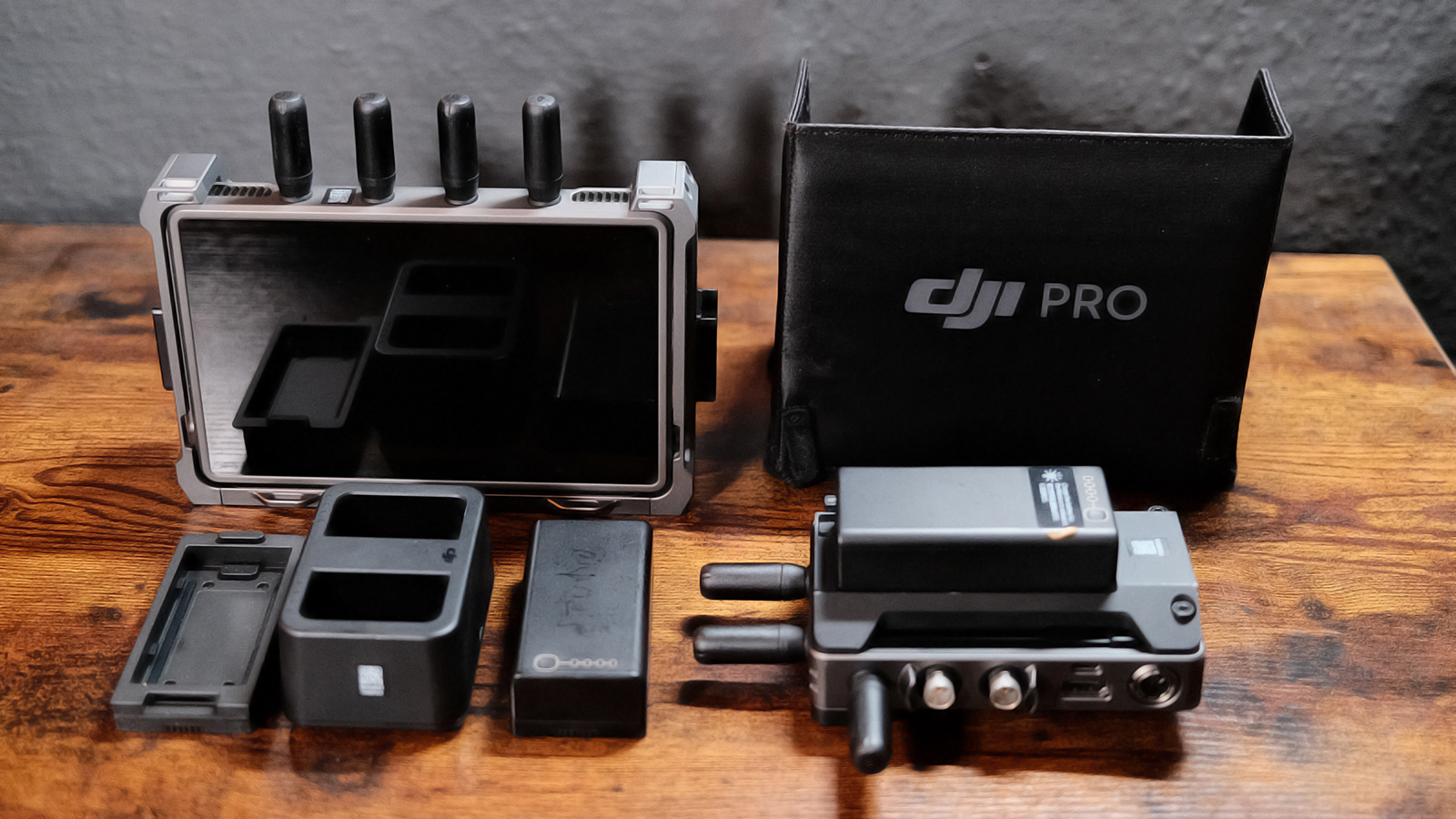
The DJI transmitter and High-Bright combo play well with other parts of the DJI Pro ecosystem, and as part of that system, the combo is very well-built. The transmitter is built from metal, with protective shields around the ports and the clickable control wheel. Everything feels very sturdy, with responsive buttons a bright and clear display and the antennas feel robust too (although I only have the shorter ones, so can't attest to the durability of the high gain option).
The high-bright monitor/receiver feels good too, although there is more plastic here and obviously the 7" touch screen is going to be susceptible to knocks and drops. But mounted in the metal frame it is suitably protected, while none of the ports are blocked.
The transmitter has various mounting options, from threaded holes to a cold shoe mount. I opted to use a magic arm to connect to the cage on my Pyxis, enabling easy adjustment. For those using it with a gimbal, there is a plate that allows it to easily mount beneath the camera on an RS3 Pro.
The high-bright cage is covered in threaded holes, on both sides, bottom and rear. These could be used to mount it, or to mount accessories to it.
Both items are kind of modular too, with adapters for power delivery and mounting. The High-Bright can be expanded a fair bit too. There's an optional extra that allows for extra output ports, a sun hood (which is very secure and works great) plus the ability to use other items from the Pro Ecosystem.
Now, as it stands the monitor/receiver is great. You can mount it in lots of ways or just hold it but it really comes to life when you add the Ronin handles to it, meaning that you can remotely control your camera, as well as monitor the signal but more on that later.
DJI Transmission: Power

Power delivery is a key concern for many. What batteries do you use, or do you go for a mains power option? I imagine mains are less useful to many but it's nice to have. For most, the benefits of wireless transmission will run parallel to wireless power, or we would all use larger fixed screens, which is the case sometimes.
The majority will go for DJI's own batteries but it's worth knowing that NPF is supported, giving the option for varied sizes and lots of users will have a number of them already. DJI batteries are good. They are reliable, the indicator LEDs are pretty accurate and life is ok but, as with so many DJI battery solutions these only charge in serial, so the wait to fully charge a set can be lengthy.
V or Gold mount are the other options, so if you are rigged up with them, adding a d-tap cable to the power in on these devices can work well.
I found the DJI batteries kept the transmitter going for between three and three and a half hours, while the High-Bright lasted just under two hours, results pretty close to DJI's claims. That was indoors. I imagine those times would drop on colder sets.
The transmitter can also be mounted directly to an RS3 Pro gimbal, which introduces some extra features we will get to. The transmitters LEMO and HDMI ports are used in this context.
DJI Transmission: Interface
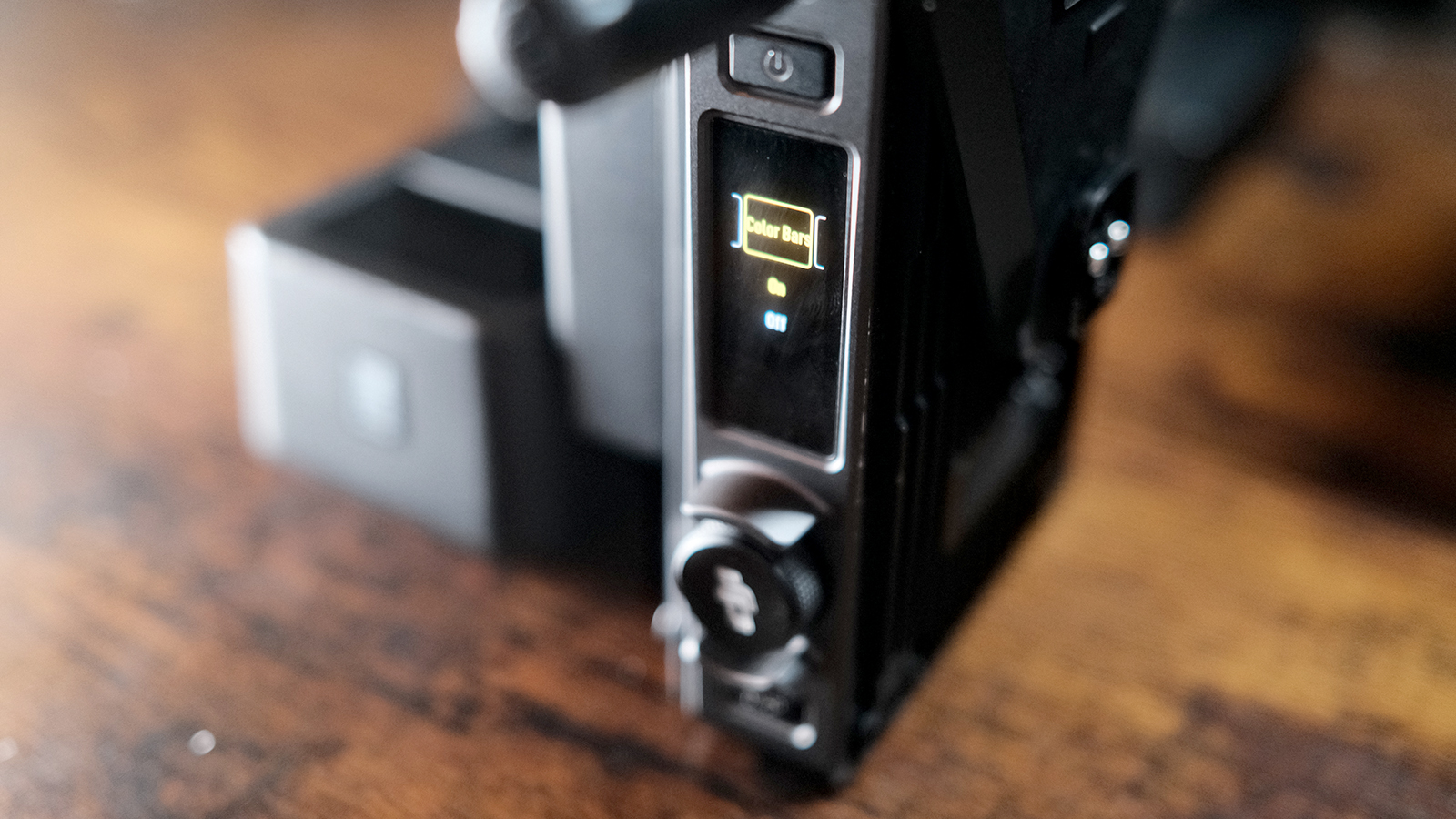
Let's start with the transmitter. Controls are simple. A single rotary encoder, with a click function, is used to navigate menus and in this case, does so well. The menus are simply for things like setting language, channel and so on. The screen is pretty small but it doesn't need to be any bigger. It's clear and very easy to read.
The High-Bright is a different beast and is mostly all touchscreen. The 7" display is very responsive and I haven't once found it missed my inputs, so well done DJI, as it is so frustrating to have to keep prodding something for it to respond.
As a stand-alone monitor, it functions much like any other on the market, with options for monitoring, histogram, and various other data. However, it can do an awful lot more, when paired with different devices. If you use one of DJI's pro gimbals you're in for a treat. The High-Bright has an internal gyro, so you can move it and the gimbal head will follow. This is great news if you have your gimbal mounted on a vehicle, or a jib arm, or simply have an operator controlling the position, with a second in charge of the camera.
Better yet is when you add the Focus Pro grip, or Ronin 4D grips, which give you focus control, so an AC can pull focus from a suitable location and if you have certain cameras, you can control them too via the touchscreen. This is fantastic but does mean the optional purchases are needed for the extra benefits.
I do wish there was a way to use the Focus Pro handle for this too but that isn't an option, as it needs a wired connection to the lidar unit on the camera. The Focus Pro Grip however does work and works very well.
DJI Transmission: Connections
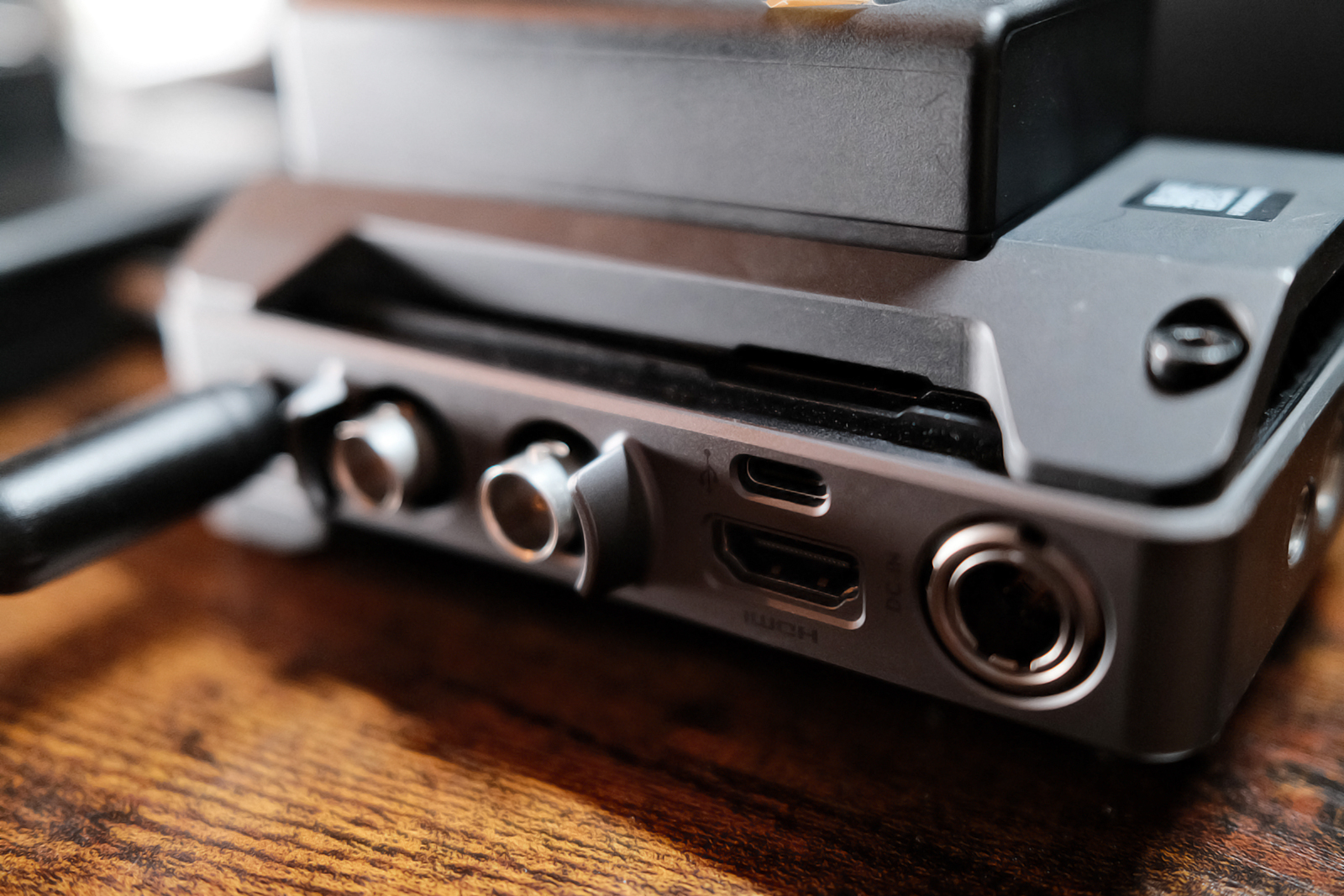
Connections are plentiful here. Again, let's start with the transmitter. This has SDI in and out, HDMI in, and a LEMO connector for power. It's worth noting cables for the different options are included (as is a nice deli-style case for the combo). Plus a USB-C port for firmware updates
The High Bright has USB-C for use with a webcam and firmware updates, a 3G SDI and HDMI 1.4 output, as well as power, a 3.5mm audio output port, and a micro SD card slot.
There is an optional extra for additional outputs, which runs at a pricey £325 for an additional SDI, HDMI, and DC in port.
Let's talk wireless connections too. To provide a robust transmission DJI has opted to include 2.4Ghz and 5.8Ghz with up to 28 channels, so it should be possible to find one with no interference. On top of that stability is increased by automatic channel hopping.
Security is strengthened here with the inclusion of 256-bit encryption, keeping your files safe, which could be a concern when shooting projects, especially if there are NDAs involved.
DJI Transmission: Performance
ok, so it's well built, full of features for all eventualities but does it actually work as advertised? Thankfully the answer is a resounding yes.
Once the initial setup is done, which involves connecting to a computer to activate and do any firmware updates, pairing and starting up is a doddle.
All the controls are well-placed, easy to use, and respond well. The User experience is great and is a real pleasure. but it's the stability and range that is really important here. DJI has a reputation for some excellent video transmission, thanks to years of drone development, and that has paid off here, as the video is rock solid.
I didn't manage to get the claimed maximum of 6k but I didn't expect to. I did get just over a mile though, while in a moving car, with the camera in the back of a van. It's easy for both operators to see the strength of the signal too. either on the monitor or transmitter, which gives a reading of the current bitrate, which maxes out at 40mbps. Any interference is shown too, so you're always in the know.
Another great feature is the ability to capture proxies to the microSD card. These are 1080/60 H.264 recordings and a definite bonus, as you can offload to start an edit, as well as add a layer of backup, although with limited quality.
Let's talk about video quality. Of course, you'll be capturing your final results elsewhere, so resolution is less key here. You do get a range though. These are 1080p: 23.98/24/25/29.97/30/50/59.94/60fps720p: 50/59.94/60fps and there are options for 720p too. All fine for monitoring purposes and good enough for nailing focus remotely too, although you may wish for 4k in some situations.
I don't use Sony cameras but if you do, then you also get mirroring, allowing you to see and adjust your camera's menus directly on the High-Bright. Meta data is different however and most cameras data can be transmitted. Useful.
Latency is less of an issue when you are simply monitoring but if you are trying to pull focus it can be an obstruction to your process and while there is a little latency here it isn't bad. DJI states 70ms, which sounds high but in use, it doesn't feel it.
One final note. Depending on your positioning/rigging, the transmitter can get pretty warm, especially after extended use. That may not be a problem but if you're a handheld shooter, you. may need to consider where you contact your gear and rig accordingly. It won't burn you but it can get warm enough to be uncomfortable.
DJI Transmission: Verdict
DJI's Trasmission combo offers all round top performance. While it's true that some people will need to spend on some extras, it still remains great quality. Being able to slot into the Pro ecosystem is great and if you already use one of DJI's pro gimbals you're on to a winner. The High-Bright monitor is as good as other high end monitors too and the power/rigging options for the kit are well thought out too.
| Features | Lots f features make this a really versatile device. | ★★★★★ |
| Design | Nicely designed and well built. | ★★★★☆ |
| Performance | There's nothing to complain about with the performance. | ★★★★★ |
| Value | Considering the extras needed it loses a star for value. | ★★★★☆ |
✅ Buy it...
- Rock solid transmission is key to your work
- You use a Ronin gimbal
- You want remote control of a Sony camera
- Proxy recording is useful to you
🚫 Don't buy it...
- You need 4k transmission
Alternatives
The accsoon doesn't have a monitor but the 4k transmission is great and the connection is excellent.
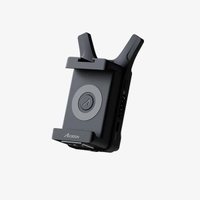
For a more budget friendly, simpler solution you can pair this with an iOS or Android device for easy monitoring.

Rob is Editor of 3D World and ImagineFX magazines and also works as creative director for his own studio, Pariah Studios, producing 3D animations and VFX for a variety of clients. When not at his desk, he can usually be found painting miniatures.
You must confirm your public display name before commenting
Please logout and then login again, you will then be prompted to enter your display name.

